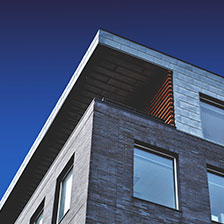Access to Mayfair has been a “higgledy-piggledy” area that has over the past 30 years put the needs of business logistics and transportation ahead of the needs and preferences of its residents. Unsurprisingly, the longevity of commercial buildings continues to dwell and the borough is continuing its change back to a more residentially focused area.
Unsurprisingly the accessibility area is one that has also found it harder to have its voice heard in the area. However, a group called the Mayfair Forum is focusing on developing the borough into a more friendly and accessible area for residents and visitors alike. Taking into consideration accessibility issues that are raised due to the nature of the streets recommendations such as widening pavements, increasing the number of pedestrian crossings, and reducing the access to traffic within the heart of Mayfair.
This development plan, put together by leaders of the community, residents, and local councillors in order to improve the area for its visitors as well as those that live there, and to have a bigger say in the future of their area. This plan is a great example of how local groups can work with government to have an impact on their area and shows the importance of becoming involved in the future of your local area. Having the input of industry professionals such as independent Mayfair estate agent Peter Wetherell, has allowed The Mayfair Forum to take educated and informed steps in their proposals. “As a resident and businessman with over 30 years knowledge of the area and industry, I was more than happy to be able to submit recommendations along with the rest of the group and be able to guide them through the bureaucracy that can frequently hinder plans such as this.” Using plans such as the London Accessible Housing Plan, the forum believe they have been able to provide a much more rounded plan for the borough than formerly presented plans. “While multiple plans around the country ensure that the needs of accessible property are addressed, there is minimal progress at adapting around boroughs to ensure accessibility is improved for all, including those with accessibility issues.”
As the area is continuing its residential development, it has increased the number of new developments of all financial levels. Delivering over 500 new residences by the end of 2022 it is clear this plan needs to be put in place to ensure that Mayfair improves as a amenable borough of the capital. With a large focus on improving air quality by minimising traffic to these developments will help lower carbon emissions and reduce congestion in the area. While areas around certain developments will certainly change visually, being able to improve the greenspace areas of Mayfair will provide areas for residents and visitors to visit without falling victim to the noise and air pollution, although heavily reduced thanks to the forum’s plan, that frequently afflicts those in the area.
As one of the first boroughs to put a proposal and plan of this sort into development, the group believe they will be inspiring other boroughs to follow-suit and put health, and accessibility at the heart of their short-term plans.
Changing from Commercial to Residential Inside and Out



